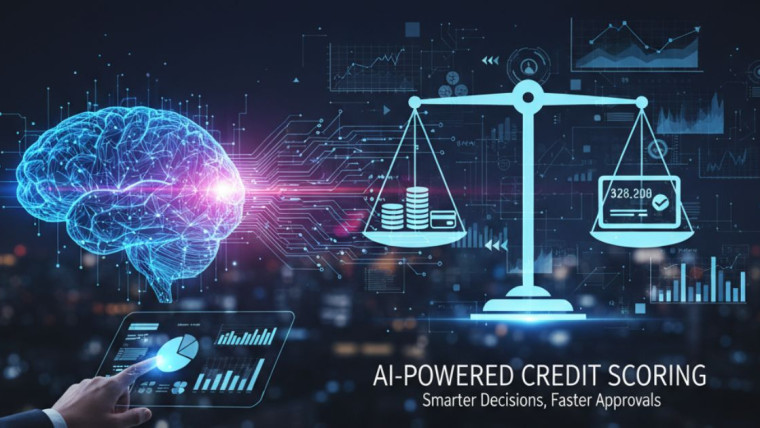The world of finance has changed dramatically with the rise of digital banking, mobile payments, and fintech platforms. Today, millions of transactions happen every second across apps, wallets, and online systems. With this rapid growth, fraud has also become more sophisticated and harder to detect.
To fight these threats, financial institutions are turning to Artificial Intelligence (AI) and Machine Learning (ML). These technologies help analyze large amounts of data, recognize hidden patterns, and detect unusual activities in real time. With smart automation and predictive analytics, AI and ML enable banks, payment providers, and digital platforms to protect assets, reduce losses, and build customer trust.
Stay with us, we explore how AI and Machine Learning for Fraud Detection are transforming digital finance, how organizations can implement them effectively, and what future innovations are shaping the next generation of fraud prevention.
Why AI and Machine Learning for Fraud Detection Matter in Digital Finance

As people move toward digital payments and online banking, the risk of fraud grows. Cybercriminals use new tactics like account takeovers, phishing, identity theft, and money laundering to exploit weaknesses in financial systems.
Traditional rule-based systems struggle to detect these modern attacks. They often flag too many false positives or miss hidden threats. That’s where AI and machine learning make a difference. These systems analyze huge volumes of transaction data in real time. They learn from patterns, detect anomalies, and quickly spot suspicious behavior.
By using predictive analytics and adaptive learning, financial institutions can minimize fraud, cut operational costs, and protect customers from financial loss.
Core AI and Machine Learning Techniques for Fraud Detection
Fraud detection using AI depends on several powerful techniques. Let’s break them down:
1. Supervised Learning
Supervised learning models are trained on labeled data — meaning they already know which transactions are fraudulent and which are legitimate. Algorithms like decision trees, logistic regression, and support vector machines (SVMs) learn from this data. Once trained, these models can detect similar fraud patterns in new transactions.
2. Unsupervised Learning
In cases where labeled data isn’t available, unsupervised learning helps. Algorithms like clustering and anomaly detection look for patterns that stand out from normal activity. These methods are great for identifying new or evolving fraud types that traditional systems can’t detect.
3. Deep Learning
Deep learning models, such as neural networks, process complex and unstructured data. They analyze customer behavior, transaction history, and device information. Tools like convolutional neural networks (CNNs) and recurrent neural networks (RNNs) can uncover subtle signals that reveal fraudulent activity hidden within massive datasets.
Together, these AI methods create a strong, adaptive defense system that continuously improves as new data comes in.
Implementing AI and Machine Learning for Fraud Detection in Financial Institutions

Deploying AI systems successfully takes careful planning and data management.
-
Data Collection and Preparation – Financial institutions must gather transaction logs, account data, and device fingerprints. Clean, high-quality data improves accuracy.
-
Feature Engineering – Transforming raw data into meaningful variables helps algorithms detect fraud effectively.
-
Model Training and Testing – Machine learning models need continuous training to adapt to new fraud trends.
-
Integration with Security Systems – AI models should work with existing fraud monitoring tools for real-time alerts and faster investigation.
-
Monitoring and Feedback Loops – Regular updates and analyst feedback keep the system accurate and responsive.
With these steps, organizations can strengthen fraud defenses and ensure a seamless customer experience.
Challenges and Ethical Considerations in AI-Based Fraud Detection
Despite its benefits, AI and Machine Learning for Fraud Detection face several challenges.
-
Data Privacy: Regulations like GDPR and CCPA require strict data protection. Banks must ensure user data is anonymized and securely stored.
-
Model Bias: If the training data isn’t diverse, AI may incorrectly flag legitimate users or transactions.
-
Explainability: Financial institutions must understand why an AI model flagged a transaction as fraud to comply with regulations and maintain trust.
-
Adversarial Attacks: Hackers may try to trick AI systems with manipulated data, making continuous evaluation essential.
Ethical and transparent Artificial Intelligence (AI) use ensures compliance, fairness, and user confidence in digital finance systems.
Future Trends and Innovations in AI and Machine Learning for Fraud Detection
The future of fraud detection is evolving quickly. Several innovations are shaping the next phase:
-
Blockchain Analytics: Helps trace the origin of digital transactions and prevent tampering.
-
Decentralized Identity (DID): Improves authentication and user verification across platforms.
-
Federated Learning: Allows banks and fintechs to train shared AI models without exposing customer data, improving accuracy industry-wide.
-
Natural Language Processing (NLP): Analyzes unstructured text like customer complaints and chat messages to identify hidden fraud attempts.
These technologies will make fraud prevention smarter, faster, and more transparent.
Conclusion
Artificial Intelligence and Machine Learning for Fraud Detection are transforming the digital finance ecosystem. They enable faster detection, fewer false positives, and smarter decision-making. While challenges like data privacy, bias, and explainability remain, emerging innovations such as blockchain analytics, federated learning, and NLP promise even stronger protection.
For financial institutions, embracing AI-powered fraud detection isn’t just about preventing losses—it’s about building trust, transparency, and resilience in a world that runs on digital transactions.
Learn More: How AI-Based Fraud Detection is Protecting Digital Payments
FAQs
How do AI and Machine Learning help in fraud detection?
AI and Machine Learning detect fraud by analyzing large sets of financial data in real time. They identify unusual patterns, flag suspicious activities, and learn from new fraud cases. This helps financial institutions prevent losses and protect customer accounts more effectively than traditional systems.
What types of fraud can AI detect in digital finance?
AI systems can detect various types of fraud, including credit card fraud, identity theft, account takeover, money laundering, and synthetic identity fraud. Machine learning models continuously adapt to new methods used by fraudsters, keeping security strong.
Why are traditional fraud detection methods less effective today?
Traditional rule-based systems rely on fixed patterns and manual updates. They often generate false positives or miss new fraud schemes. In contrast, AI and Machine Learning for Fraud Detection can automatically learn, adapt, and identify emerging threats in real time.
Is AI-based fraud detection safe for customer data?
Yes — when implemented properly. Financial institutions follow strict data privacy regulations such as GDPR and CCPA. AI models use anonymized and encrypted data to ensure customer information remains secure while maintaining fraud detection accuracy.
What is the future of AI and Machine Learning in financial fraud prevention?
The future will include advanced tools like blockchain analytics, federated learning, and natural language processing (NLP). These innovations will make fraud detection more transparent, collaborative, and accurate across global financial systems.








AI Fraud Detection: How Banks Prevent Financial Crime in Real Time
Harnessing AI and Machine Learning for Fraud Detection in Digital Finance
Digital Wallets vs. Traditional Banking: What Consumers Need to Know
What Is FinTech? A Beginner’s Guide to the Finteching 2025
AI Credit Scoring: Revolutionizing SME Banking and Digital Loans
AI Fraud Detection: How Banks Prevent Financial Crime in Real Time
Embedded Finance: How Seamless Financial Services Are Integrating into Everyday Apps
AI-Powered Credit Scoring: Revolutionizing Digital Lending in the Digital Finance Era